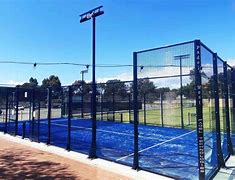

The Rise of Padel and Its Impact on Sports Fields
In recent years, the sport of padel has surged in popularity across the globe, emerging as one of the fastest-growing racquet sports. Originating from Mexico in the 1960s, this hybrid game combines elements of tennis and squash, played on an enclosed court. Its unique charm lies in its accessibility, engaging gameplay, and the sociable atmosphere it fosters. As the number of players increases, so too does the demand for dedicated padel fields.
A typical padel court is smaller than a tennis court, measuring 20 meters long and 10 meters wide. It features walls made of glass and a fence, allowing players to bounce the ball off the surfaces during play. This enclosed structure not only enhances the dynamics of the game but also makes it feasible to play in diverse weather conditions. The field's size and design make it suitable for players of all skill levels, from novices to seasoned athletes.
One of the most compelling aspects of padel is its social nature. Matches are typically played in doubles, and the sport encourages interaction between players, making it a perfect choice for friends and families. The design of padel fields often reflects this social aspect, with areas for spectators and amenities that promote communal experiences. Clubs hosting padel courts are increasingly incorporating lounges, cafes, and viewing areas to enhance the social environment.

Another factor contributing to the growing popularity of padel is its relatively low barrier to entry. Unlike tennis, where lessons and equipment can be costly, players can often borrow rackets and reserve courts at affordable rates. This accessibility has led to a broader demographic engaging with the sport, bridging age gaps and introducing younger players to racquet sports.
As more individuals embrace padel, cities worldwide are responding by developing purpose-built facilities. Urban planners and sports developers are recognizing the need for more padel fields, transforming parks and recreational areas into vibrant sporting hubs. These new spaces not only foster physical activity but also contribute to community building, bringing people together through shared interests.
In terms of health benefits, playing padel is an excellent cardiovascular workout. It enhances agility, coordination, and overall physical fitness, making it an appealing option for those looking to maintain an active lifestyle. The quick rallies and strategic plays involved in padel ensure that players are constantly engaged, reducing the likelihood of burnout compared to more monotonous workout routines.
In conclusion, the growth of padel and its dedicated fields signifies a positive shift in recreational sports. By fostering connection, encouraging fitness, and promoting inclusivity, padel is not just a game; it is a movement that revitalizes community spirit, inviting everyone to join in the fun on the court. As the sport continues to flourish, it promises to leave a lasting imprint on the landscape of recreational activities worldwide.
High-Performance Industrial Flooring Solutions China Paddle Tennis Court for Sale
High-Performance Industrial Flooring Solutions Durable & Cost-Effective
Homogeneous Transparent Floor – Durable & Stylish Rubber Floor Solutions
Premium Homogeneous Transparent Floor for Durable & Stylish Spaces Rubber Floor Solutions
Premium Sports Floor Solutions Durable PVC Sports Floor & Rubber Floor for Gyms
Durable Rubber Composite Floor Premium Rubber Floor & Mats Solutions